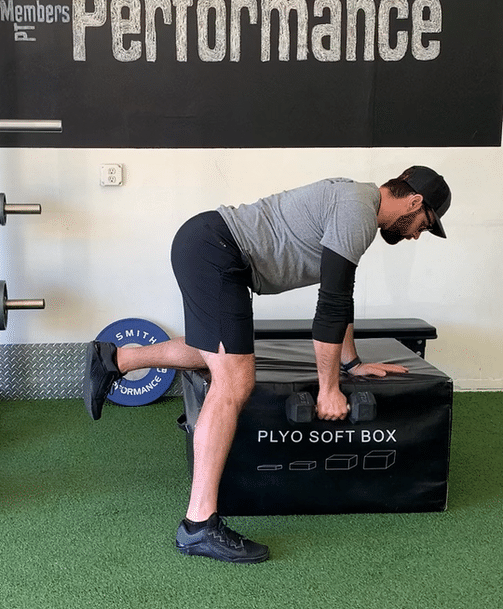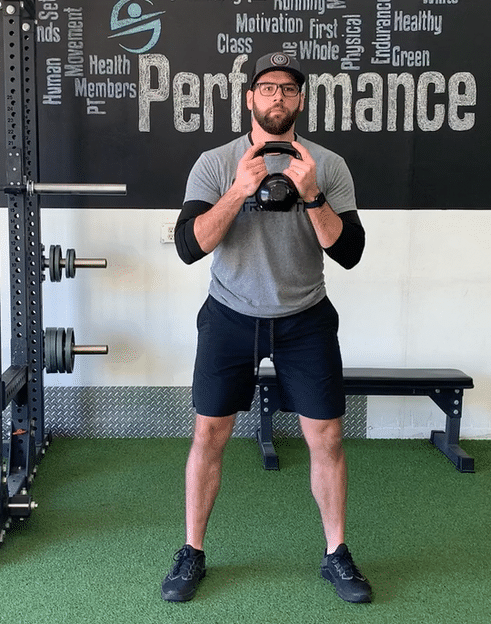Welcome to the
SPC Blog
We share actionable advice about pain management, injury, strength training, exercise, rehab, and how to make healthcare work for you.


The Importance of Protein Consumption for Resistance Trained Individuals
Congratulations, you’ve embarked on the journey of resistance training. As you delve into the realm of exercise, one of the first topics you will hit is to up your protein intake. Unlike a few areas that may seem superfluous, it is an important area to get the right nutrients, with protein taking center stage. Here’s a brief overview to ensure you maximize the benefits of your training regimen through adequate protein consumption. Amount To optimize muscle growth and recovery, aim for a protein intake ranging between 1.6 to 1.8 grams per kilogram of body weight daily. This can be confusing, since we do not use the metric system on a daily basis, so we will show both grams to pounds ratio and grams per kilogram
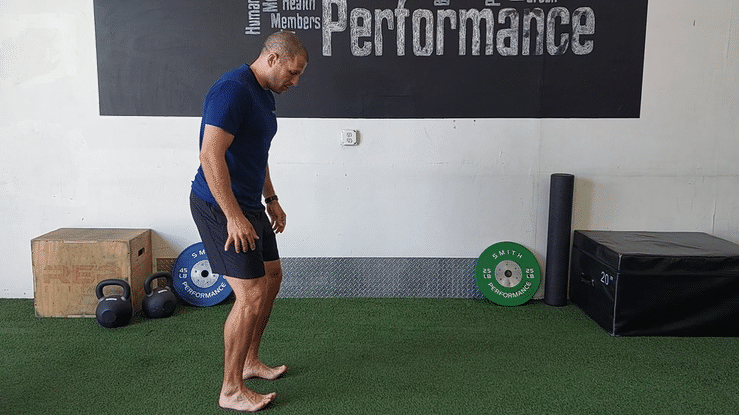
Lower Extremity Control: Supplemental Program
The leg is often hurt because we do not absorb the external forces acting on the body. We want to systematically get you better at this.
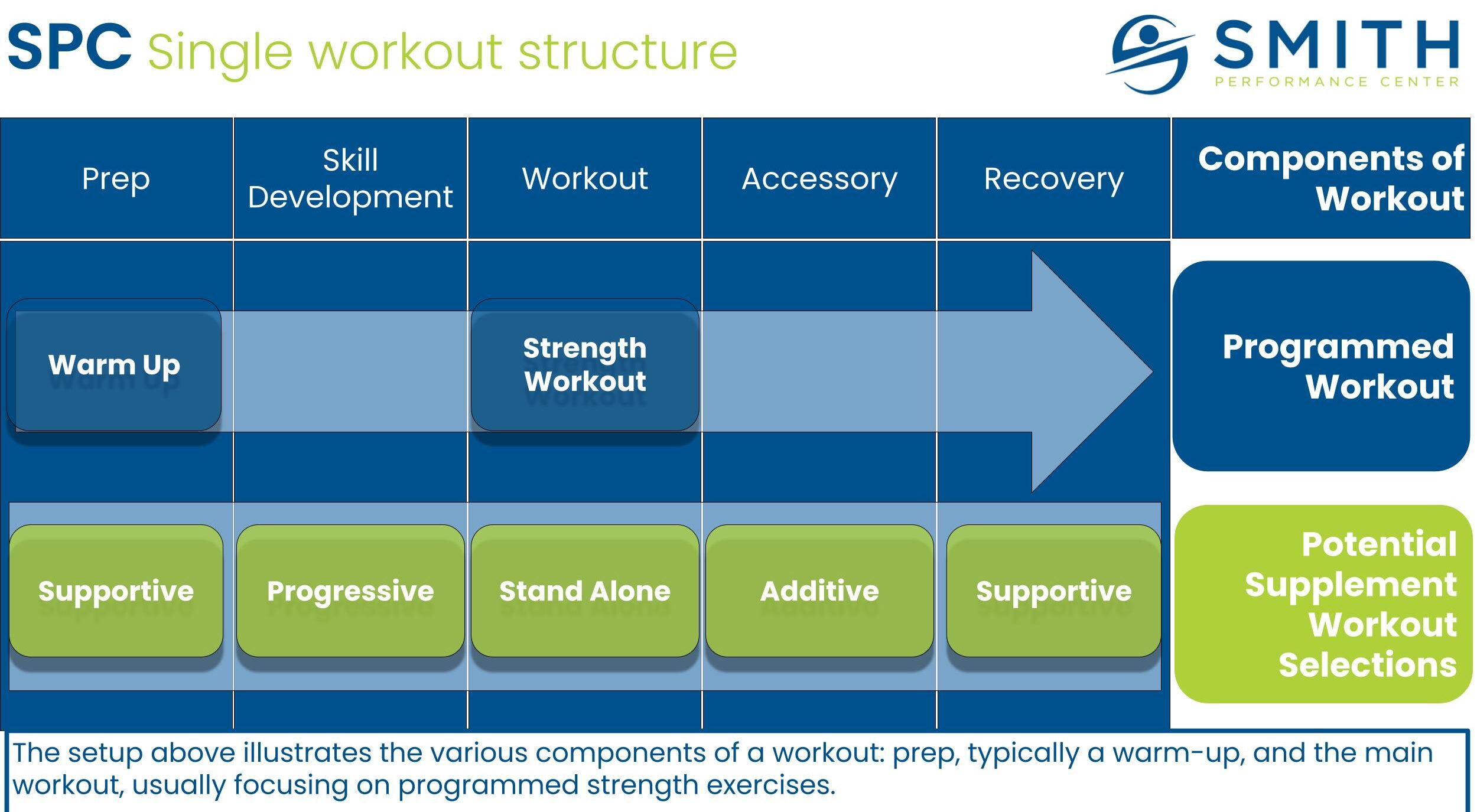
How to use On Demand Supplement Workouts within your normal exercise routine
At SPC, we’re excited to announce that our supplemental workouts will be available on our On Demand platform. However, we understand that there may be a learning curve associated with incorporating these workouts into your routine. That’s why we want to ensure you have the resources to make the most of this valuable tool for future reference. If you’re unsure about what the supplemental programs entail, we encourage you to check out our blog post, ‘ The 4 Types of SPC Supplemental Workouts.‘ We will go into each aspect of the workout, why, and when to add the supplemental workouts. Understanding the Structure: Components of a Workout A single workout, at the most simple level, should include a prep component and a workout component. But
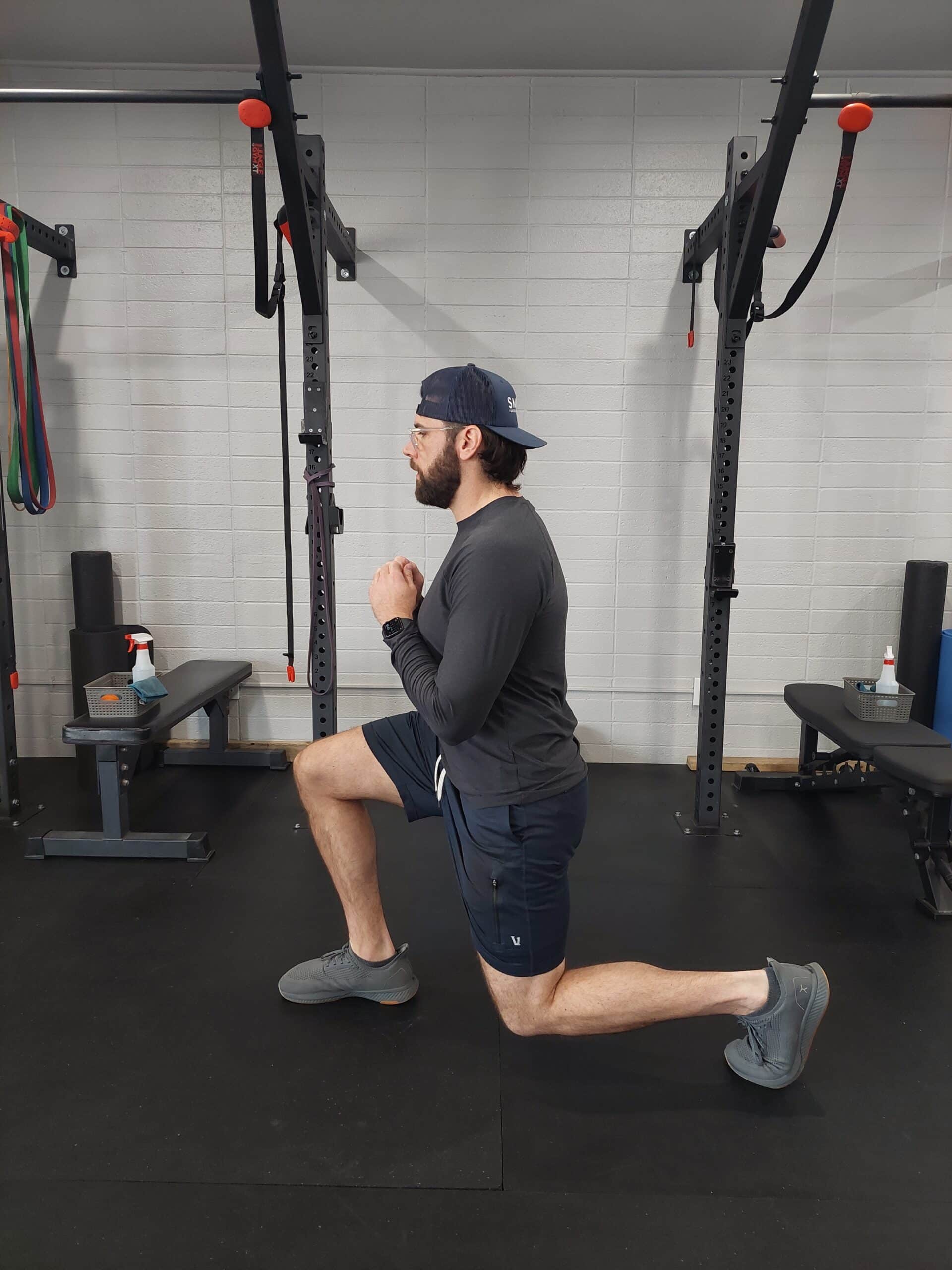
The 4 Types of SPC Supplemental Workouts
The foundation of our programming is the strength workout. Building upon this foundation using a progressive overload approach is essential for long-term strength and fitness gains. Incorporating supplemental workouts can provide variety, target specific muscle groups and movement patterns, develop new skills, and enhance overall fitness and performance. Supplemental workouts can serve various purposes, such as addressing weaknesses, improving mobility, treating recurrent injuries, reducing risk for falls or simply adding diversity to training. They include exercises like mobility drills, corrective exercises, accessory movements, and conditioning work. By integrating supplemental workouts into your programming, you create a more well-rounded and balanced training regimen. This approach not only helps to prevent boredom and plateaus but also allows for continuous improvement and adaptation over time. We want to
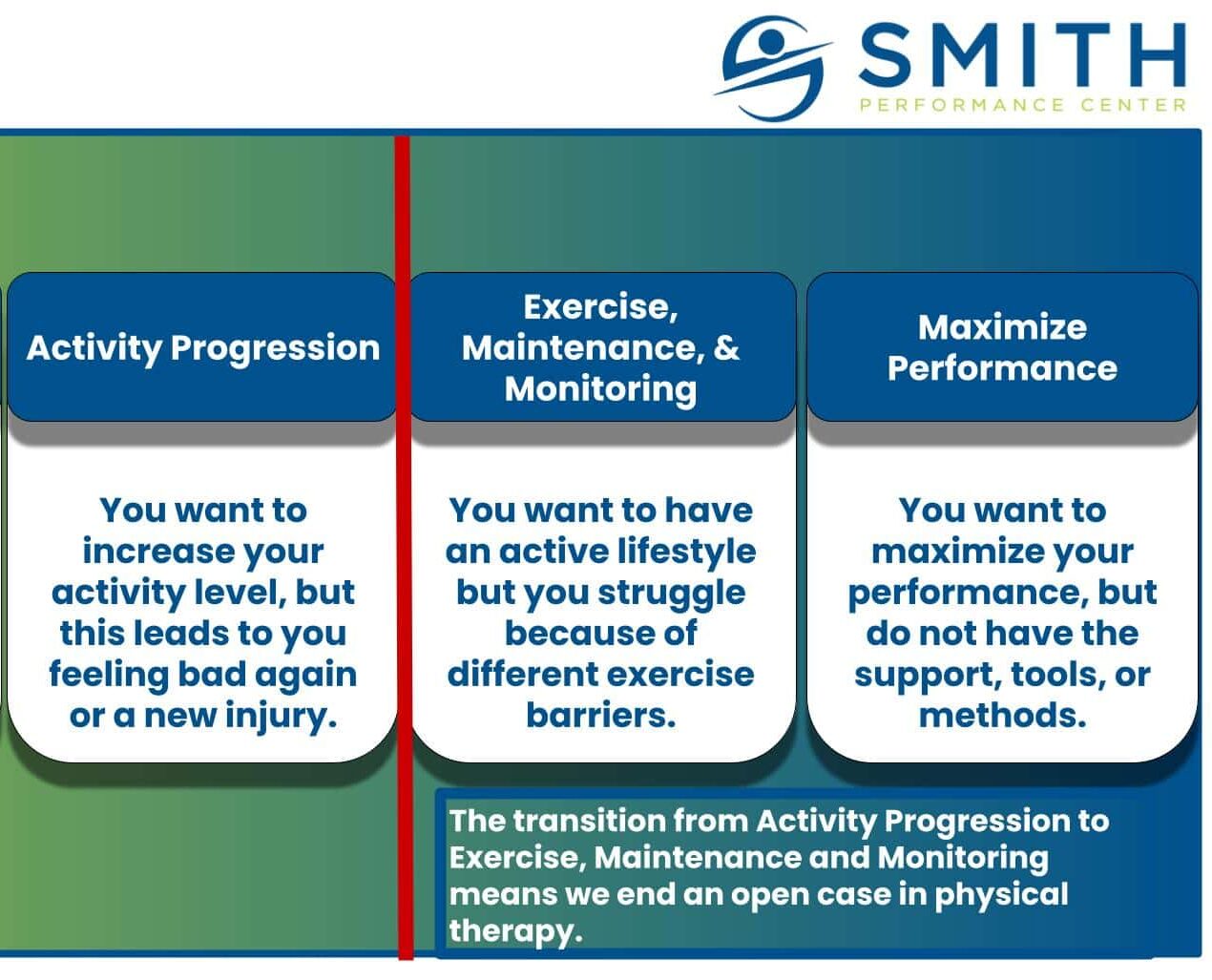
What is the difference between Phase 3: Activity Progression and Phase 4: Exercise, Maintenance, and Monitoring?
Welcome to the transition zone—phase 3 to phase 4—at Smith Performance Center. This shift marks an important move from rehabilitation to performance. We’re committed to ensuring that our community doesn’t get stuck in a permanent rehab mindset. The switch from rehab mode to peak performance mode can pose challenges, demanding careful consideration and expert guidance. Phase 3 is all about building up tissue capacity, gradually ramping up activity levels, and prioritizing overall well-being. It involves strengthening muscles, alleviating muscle inhibition, closely monitoring responses to increased activity, and addressing any lingering issues stemming from previous inactivity. Essentially, it’s about improving tissue capacity while laying down a solid foundation for what comes next. In contrast, phase 4 signifies a fresh chapter, with a focus on establishing a
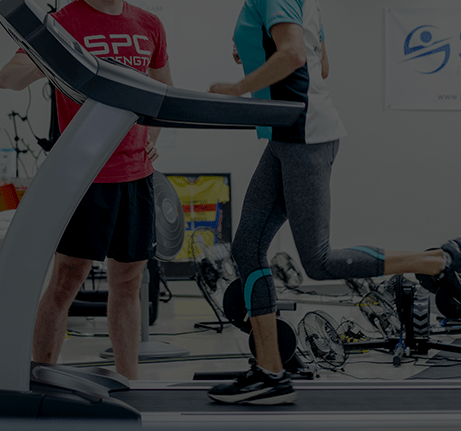
The 10 Strategy Mistakes of Repetitive Injury When Exercising
Do you want to get back to exercise but keep on getting hurt? The merry-go-round misery of a repeatedly injured exerciser is a common complaint at Smith Performance Center. When someone shows up, our physical therapists listen to a series of injuries that seem to occur every time they get into a workout routine. The exerciser finishes rehab and heads back to their respective sport. The first few days go well, but inevitably the same problem comes back. In our clients’ minds, their body has lost the ability to stay healthy. They believe age is driving the problem, or the joints are shot. They think the activity they choose to do is too vigorous and must be replaced. These are not the problem. The cycle

The Importance of Protein Consumption for Resistance Trained Individuals
Congratulations, you’ve embarked on the journey of resistance training. As you delve into the realm of exercise, one of the first topics you will hit is to up your protein intake. Unlike a few areas that may seem superfluous, it is an important area to get the right nutrients, with protein taking center stage. Here’s a brief overview to ensure you maximize the benefits of your training regimen through adequate protein consumption. Amount To optimize muscle growth and recovery, aim for a protein intake ranging between 1.6 to 1.8 grams per kilogram of body weight daily. This can be confusing, since we do not use the metric system on a daily basis, so we will show both grams to pounds ratio and grams per kilogram

Lower Extremity Control: Supplemental Program
The leg is often hurt because we do not absorb the external forces acting on the body. We want to systematically get you better at this.

How to use On Demand Supplement Workouts within your normal exercise routine
At SPC, we’re excited to announce that our supplemental workouts will be available on our On Demand platform. However, we understand that there may be a learning curve associated with incorporating these workouts into your routine. That’s why we want to ensure you have the resources to make the most of this valuable tool for future reference. If you’re unsure about what the supplemental programs entail, we encourage you to check out our blog post, ‘ The 4 Types of SPC Supplemental Workouts.‘ We will go into each aspect of the workout, why, and when to add the supplemental workouts. Understanding the Structure: Components of a Workout A single workout, at the most simple level, should include a prep component and a workout component. But

The 4 Types of SPC Supplemental Workouts
The foundation of our programming is the strength workout. Building upon this foundation using a progressive overload approach is essential for long-term strength and fitness gains. Incorporating supplemental workouts can provide variety, target specific muscle groups and movement patterns, develop new skills, and enhance overall fitness and performance. Supplemental workouts can serve various purposes, such as addressing weaknesses, improving mobility, treating recurrent injuries, reducing risk for falls or simply adding diversity to training. They include exercises like mobility drills, corrective exercises, accessory movements, and conditioning work. By integrating supplemental workouts into your programming, you create a more well-rounded and balanced training regimen. This approach not only helps to prevent boredom and plateaus but also allows for continuous improvement and adaptation over time. We want to

What is the difference between Phase 3: Activity Progression and Phase 4: Exercise, Maintenance, and Monitoring?
Welcome to the transition zone—phase 3 to phase 4—at Smith Performance Center. This shift marks an important move from rehabilitation to performance. We’re committed to ensuring that our community doesn’t get stuck in a permanent rehab mindset. The switch from rehab mode to peak performance mode can pose challenges, demanding careful consideration and expert guidance. Phase 3 is all about building up tissue capacity, gradually ramping up activity levels, and prioritizing overall well-being. It involves strengthening muscles, alleviating muscle inhibition, closely monitoring responses to increased activity, and addressing any lingering issues stemming from previous inactivity. Essentially, it’s about improving tissue capacity while laying down a solid foundation for what comes next. In contrast, phase 4 signifies a fresh chapter, with a focus on establishing a

The 10 Strategy Mistakes of Repetitive Injury When Exercising
Do you want to get back to exercise but keep on getting hurt? The merry-go-round misery of a repeatedly injured exerciser is a common complaint at Smith Performance Center. When someone shows up, our physical therapists listen to a series of injuries that seem to occur every time they get into a workout routine. The exerciser finishes rehab and heads back to their respective sport. The first few days go well, but inevitably the same problem comes back. In our clients’ minds, their body has lost the ability to stay healthy. They believe age is driving the problem, or the joints are shot. They think the activity they choose to do is too vigorous and must be replaced. These are not the problem. The cycle


